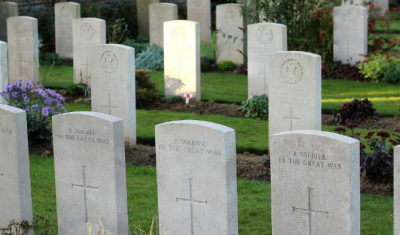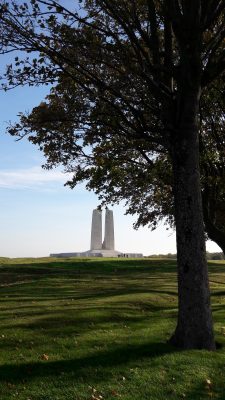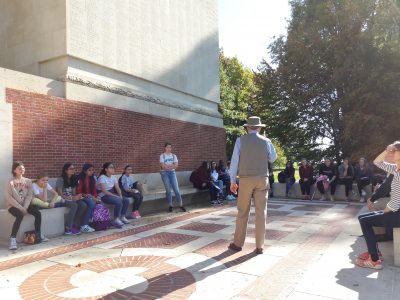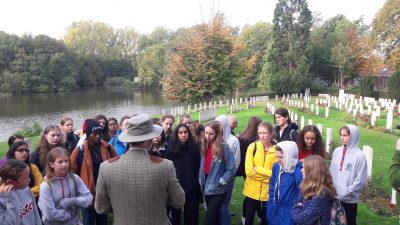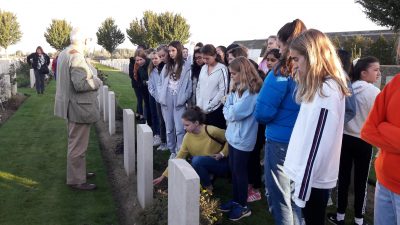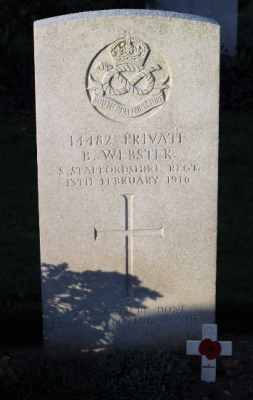Visit to the World War One Battlefields (2).
Following on from the Assembly on the Seniors’ visit to the World War One battlefields, here are some personal views from Lizzy Higham, Upper V, and Lucy Williams, Upper IV. First we hear from Lizzy:
‘On Thursday 11th October at 4.30am in the morning, history students from Upper IV to Upper V gathered at school to embark on a trip to the World War I Battlefields in France and Belgium. Arriving in Calais at midday, we went straight to our first site: Lochnagar mine. Located in a small village within the Somme département, this seemingly quaint countryside landscape is home to a vast crater, which was secretly planted by the British army, ready for 1st July 1916: the beginning of the Battle of the Somme. Today, unlike many other craters that have been filled in, the site remains almost entirely untouched, and now serves as a memorial. We also visited the mesmerising Thiepval Memorial to the Missing of the Somme. Dedicated to the 72,000 British and South African soldiers who went missing in action, the 43 metre-high monument is visible for miles, and is touchingly engraved with every single name of those who went missing. Although we were all tired from travelling, the sites that we had visited in the first day alone were unforgettable, and marked the start of an incredible trip.
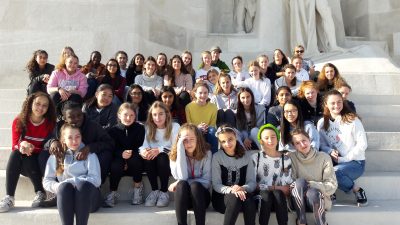
On the Friday, we had a non-stop itinerary. In the morning, we visited various British cemeteries, which can be found all over Belgium, and we also had the chance to see an advance dressing station, with the surgery room and recovery rooms still perfectly preserved. At around midday, we drove to the Memorial Museum Passchendaele in Zonnebeke, Belgium. Dedicated to the 500,000 men who died at the Battle of Passchendaele, this museum was extremely sad as well as educational. Inside the museum, all of us were able to feel the weight of the soldiers’ equipment, and even had a chance to smell the common gases used during the war, all of which gave us a unique insight into what life was like for the soldiers. In the afternoon, we visited the Tyne Cot memorial, the resting place of 12,000 Commonwealth soldiers. Remarkably, all the memorials were kept in perfect condition, with individual flowers next to each grave, and even a personalised inscription chosen by the soldier’s family. All of us were particularly touched by one inscription: ‘sacrificed to the fallacy that war can end war’. Before returning to Ypres, we visited Sanctuary Wood Museum, where we were able to see a rare collection of 3D photographs, weapons, uniforms and bombs, step inside real British frontline trenches, and even see the final remains of trees that were there 100 years ago. After our long day in Belgium, we briefly stopped at a German cemetery before returning to Ypres, where we sampled numerous Belgian chocolates. Besides the delicious treats, we all watched a unique service of commemoration. Centred around Menin Gate, which is engraved with the names of all the missing or unidentified soldiers of the Great War, we watched the ‘Last Post’ ceremony which is held every night at 8.00pm.
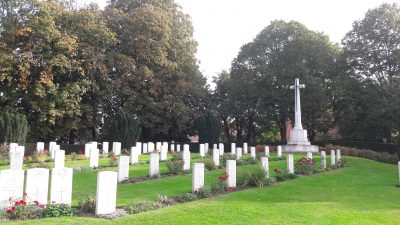
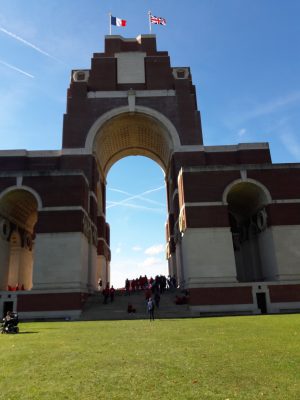
On Saturday, we travelled back to France, where we visited the expansive French Cemetery, Notre Dame de Lorette, before making our way back home. After seeing only one German cemetery and predominantly British cemeteries, visiting the French cemetery was another new experience for us.
As we left Belgium behind and returned to northern France, there wasn’t a single person untouched by what we had seen over the past two days. However, as emotionally challenging as it seemed at the time, it was an unforgettable visit, which I doubt any one of us will ever forget. Furthermore, this year, as we celebrate 100 years since the end of World War I, it makes us all the more appreciative of the sacrifice that each of those soldiers made.’
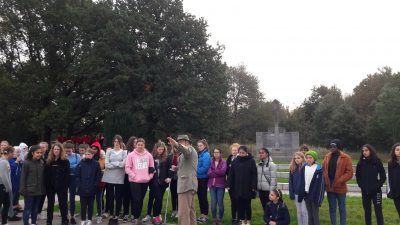
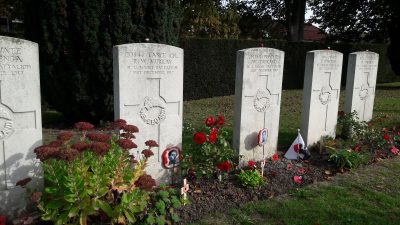
Lucy continues:
‘This visit was particularly poignant as 2018 marks the centenary of the end of the Great War. During our trip, we visited various cemeteries in which the servicemen are buried together with war memorials marking the deaths of those whose bodies were never recovered. The cemeteries that we visited were those of British, French, Commonwealth and German troops. On our last night, we attended the moving Last Post ceremony where Naomi and I lay a wreath on behalf of our school.
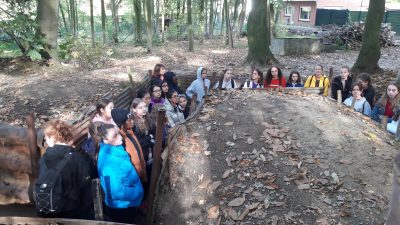
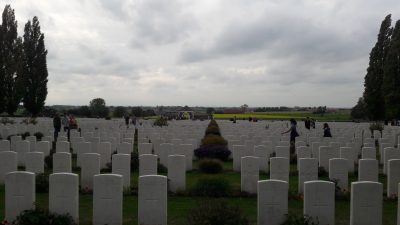
The visit permitted us to walk in the footsteps of all the brave, young men who gave up their lives for “our tomorrows”. We saw the terrible conditions that these men endured whilst fighting in the trenches.
The personal highlight of the trip for me was finding the grave of my great, great uncle who fought in the Great War and died in battle, aged 23. Before departing for France, my Granny had told me about her family’s involvement in the war and that one of her uncles, Bailey Webster, had lost his life during the battle of the Ypres Salient. His grave is in Ration Farm Cemetery, France, and as I approached his grave, I was touched to see that the sun was shining on his headstone as though leading us to its location.’
